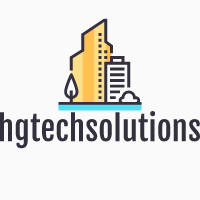Managing rental properties from a distance can be a challenging endeavor. However, with the integration of best practices and modern tools, landlords can efficiently oversee their properties and ensure a seamless rental experience for both themselves and their tenants. Below, we explore the best practices and tools in remote rental management, backed by information from reputable sources.
Utilizing Technology
1. Property Management Software
Modern property management software facilitates easy communication between landlords and tenants, aids in maintenance management, and helps in the organization of rental-related finances. Popular platforms like AppFolio offer comprehensive solutions for remote property management.
2. Virtual Tours
Virtual tours are an innovative tool that allows prospective tenants to view the property without physical visits, saving time and effort. Platforms such as Zillow 3D Home enable landlords to create virtual tours efficiently.
Effective Communication
3. Regular Updates and Newsletters
Keeping tenants informed through regular updates and newsletters can foster a sense of community and transparency. Tools like Mailchimp can be instrumental in setting up automated newsletters.
4. Online Tenant Portals
Tenant portals offer a centralized platform where tenants can pay rent, submit maintenance requests, and communicate with landlords. Services like Buildium provide reliable tenant portal solutions (Buildium).
Legal and Security Measures
5. Digital Leases
Digital leases facilitate seamless and secure transactions. They allow tenants to sign leases remotely, ensuring a smooth onboarding process. DocuSign is a popular choice for managing digital contracts (Docusign).
6. Background Checks
Before renting out to new tenants, conducting background checks is a critical step. Companies like Experian offer services that allow landlords to perform comprehensive background checks on potential tenants.
Maintenance and Repairs
7. Remote Monitoring
Investing in remote monitoring systems such as security cameras and smart home systems can provide landlords with peace of mind about the safety and condition of their property. Platforms like Nest offer a range of smart home products that facilitate remote monitoring.
8. Online Maintenance Management
Online maintenance management systems enable tenants to report issues and allow landlords to track repair statuses. Platforms like Property Meld offer efficient solutions for maintenance management.
Financial Management
9. Online Payment Platforms
Implementing online payment platforms for rent collection can streamline the payment process and help in keeping financial records organized. Services like Cozy provide secure platforms for online rent collection.
10. Tax Management
Understanding and managing tax implications effectively can be a complex process. Resources from the IRS provide comprehensive guidance on taxation for landlords.
Conclusion
Remote rental management can be streamlined and efficient when utilizing modern tools and adhering to best practices. By integrating technology, maintaining effective communication, and implementing secure and legal measures, landlords can successfully manage their properties from a distance. Always stay updated with the latest trends and tools in the industry to ensure a prosperous rental management experience.
FAQ
- What are the first steps to take in managing rentals remotely?
- Conducting market research
- Understanding local laws
- Building a network of local contacts
- How can technology aid in remote rental management?
- Offering virtual tours
- Facilitating digital rent payments
- Automating property management tasks
- What security measures can be implemented remotely?
- Installing surveillance cameras
- Implementing smart lock systems
- Regular property inspections through local contacts
By embracing the modern tools and methodologies discussed in this article, landlords can not only simplify the management process but also optimize it for greater profitability and tenant satisfaction.

